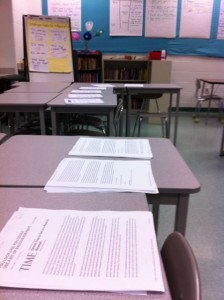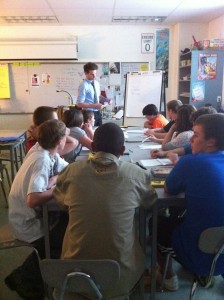Dear Readers, I forgot to share this letter with you. It was meant for my students, and while they have read it, I feel it is important to share with you too, because you have become part of this journey. Thank you for joining along with me this year or for as long as you have been reading. Thank you for your comments and constant hits on the site, even when I lag in posting. Enjoy!
An Open Letter To My Students:
On the first day of school, the look on your faces when I told you to read five books by the end of September was priceless. And then when I told you, to write for twenty minutes a day on top of that, the fear in your eyes almost made me back down. But at seven years into teaching, I’ve learned not to trust your eyes, at least not in moments like that.
However, the truth is I wasn’t sure if you could do it. I mean my fancy teacher books, blogs, and workshops had said that you could, but I wasn’t sure. It seemed like an insane amount of reading and writing. Even when I asked my Mom about it, she thought I was crazy (and my mom, well she’s my teacher expert hero). And so what you might not have heard in the mist of your fear was the trepidation in my voice— and maybe that has been our journey. Fear.
Maybe what you don’t know about me is that I love safety. There is nothing more comforting than knowing an outcome before a task has begun. In my past, if I didn’t know the outcome, I simply would have found a different way. The risk of failing, the risk of getting hurt or worse being laughed at, has always been too great.
Yet for some reason this year, the fear felt like less of a “stop right there” and more of an “I dare you to try”.
I was at a crossroad in my career passion and you gave me your hands, your pencils, and your trust. At night, sometimes I would wake up panicked, wondering if I had a lesson that would engage you, wondering if I was giving the right amount of feedback, wondering if I was still the teacher you needed me to be.
Then came you. You guys took what I gave you, and brought it to the next level. You exceeded my expectations academically, forcing me to raise the bar again and again. But that wasn’t all; you got excited and started dreaming too. Soon your dreams and ‘what ifs’ became our new curriculum. I wasn’t alone at all; I had 75 people planning with me, giving feedback, dreaming bigger.
I need to thank you for pushing your fears aside. I need to thank you for giving me the freedom to teach you as individuals. I need to thank you for allowing me to fail and for dreaming with me again.
After 180 days together, these are the messages I hope we both take home: When life hands you a healthy dose of fear and you’re not sure you can go on, know that sometimes when fear whispers it’s less a place to stop and more of a dare to press on. When your plans fail, when something doesn’t work, and everything falls to pieces— keep dreaming, keep chasing after . . . there is a supercar just around the corner.
In closing, I believe children’s book author A.A. Milne has said it the best, “If ever there is tomorrow when we’re not together . . . there is something you must always remember. You are braver than you believe, stronger than you seem, and smarter than you think.”
Sincerely your teacher, mentor, coach, editor, hairdresser, stain remover, relationship advice giver, DJ, fearless dreamer,
Miss Smith

